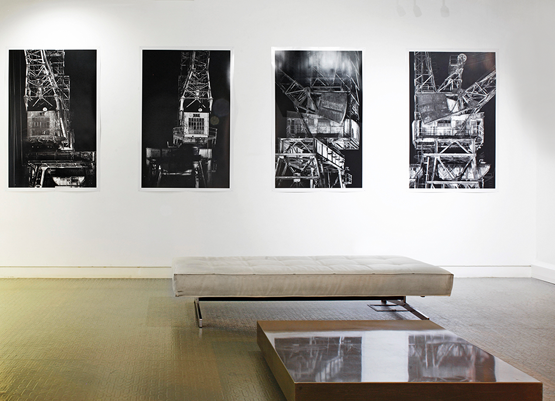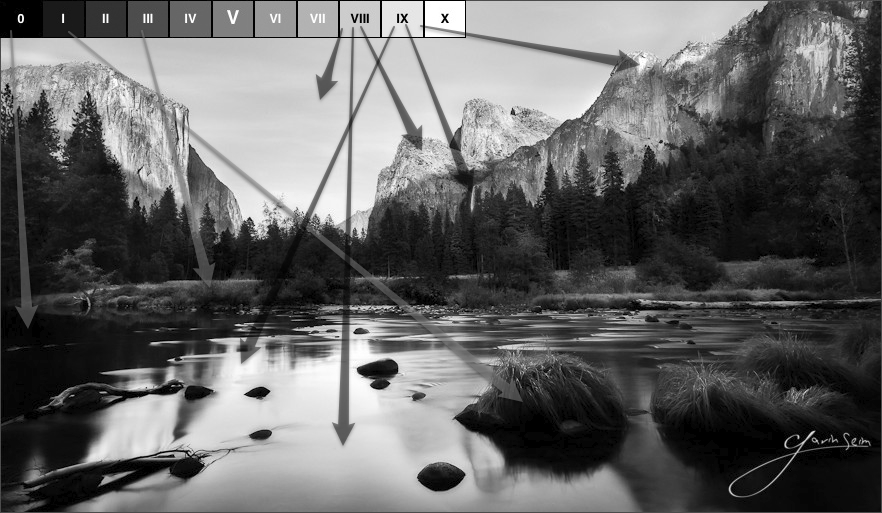Exhibition
Presenting:
You have created a series of photographs and are ready to present them on a gallery wall.
Your images should relate to each other thematically, tonally and stylistically. There should be a unity of design to the grouping of images. They should work together visually as a group from a distance before the viewer sees the details up close.
You should pay attention to the relationship between your images and the order they are in. Horizontal and vertical images can be mixed but take into account the visual impact they have. A single vertical image sticking up above a row of horizontal images will attract a lot of attention, make sure it is justified.
Titles:
Titles simply are a way to identify one work from another. This could be just a number or letter, but that loses the opportunity to entice the viewers and draw them to the work for closer examination.Your work should "stand on its own" and provide a strong/meaningful viewing experience for the viewer. A good title should go beyond a simple identifier or description and entice the viewer to explore your images for meaning or relevance. You can title the grouping of images or give titles to every image or do both.
A title that is clever, plays on words or has a poetic leaning is more effective than one that tells the viewer what they already have figured out by looking at the image. You want your viewers to explore and read your photographs.
A simple photograph of an apple will provoke more thought when titled "Eve's Revenge" than when the title is "Red Apple".
Artist's Statement:
The artist's statement is your opportunity to introduce yourself to the audience and offer insight into your motivations and techniques behind your work. You use the statement to define what you would like the observer to get out of your work and create a connection between creator and viewer.
Your statement can contain information about you, the artist. You can share biographical information and information about your background and interests as it pertains to your work. You basically introduce yourself to the viewer in the first paragraph.
You can then explain your interests and motivations as it relates to your images. Why are you moved to make these images. How you relate to these images. How you feel these images fit in the spectrum of photographic art, who do you relate to, what are your influences.
You can finish by expanding on what the viewer is looking at in your work. What do you want them to "get" from your photographs. What clues can you offer to help them understand your message.
The statement should be concise and doesn't have to "give it all away". A little mystery is ok. Let your viewers make up their own minds but give them enough to leave them wanting to see more.
The art should speak for itself, it should be strong enough to work purely on a visual level. Your task is to make it even richer with strong/ poetic titles and an informative and intriguing statement.
Artist Statement
Artist's statements are created with . This is required because this course aims to introduce you to the experience of being an artist for a semester, in addition to learning technical information about the medium of
photography. Each statement you write must be specific to the assignment with which it is submitted. Below are some guidelines to help you complete your statements. Your artist's statement can be anything you want it to be, but
primarily, it should help your audience or viewers to understand what you believe to be the most important aspects of your images and the techniques you use to make it. The statement should summarize these things simply and concisely, and not be a ten-page dissertation. Aim to keep your statement from one to three paragraphs. The time an artist spends in developing a worthwhile statement is invaluable in helping her (or him) define her art for herself. The statement submitted with your final portfolio should be the best and most comprehensive. Do some brainstorming or journaling on these questions, as though you were interviewing yourself: Why do you like to make art?
What subjects do you prefer? Why?
What processes and techniques do you use? Why?
How is your work unique and different from others?
What do you see in your artwork?
What do other people say they see?
What are your goals and aspirations as an artist?
Who or what inspires you?
How has your artwork affected you personally? Don't analyze at this point, just keep adding to the lists. Once you have a good start, start analyzing, spend some time comparing one thought to another and decide which one grabs you. Throw the other one out. Keep comparing and eliminating until you have three or four main ideas that express the essence of your artistic purpose. Your statement should be short, clear, understandable.
Everything in your statement should be relevant to your artwork in general.

